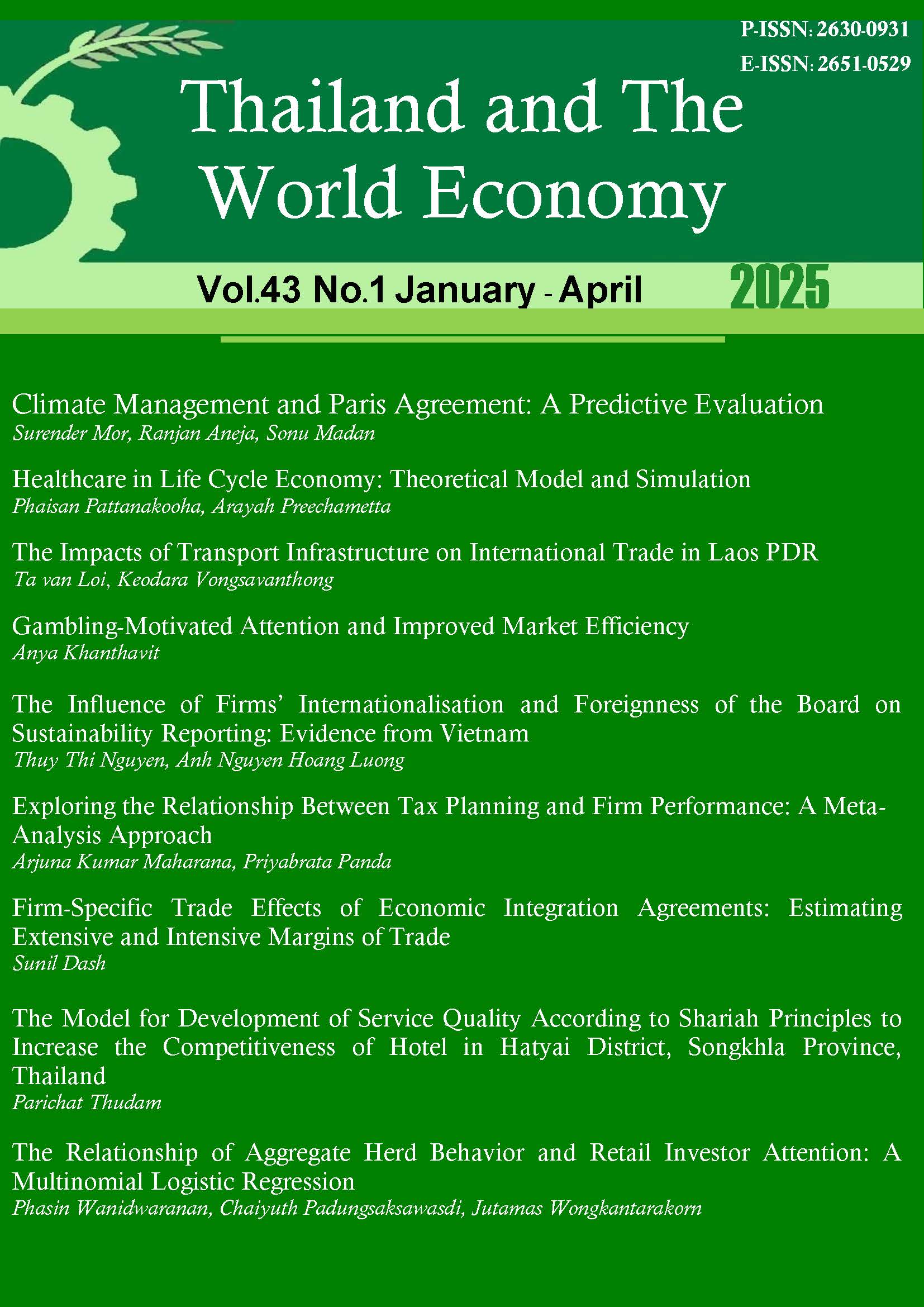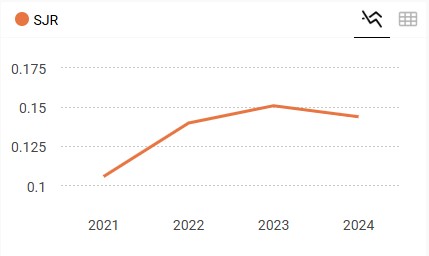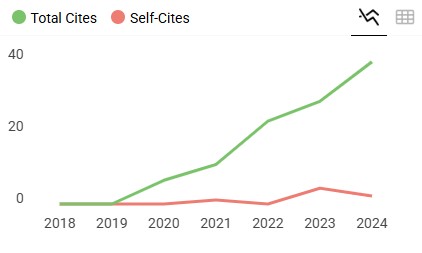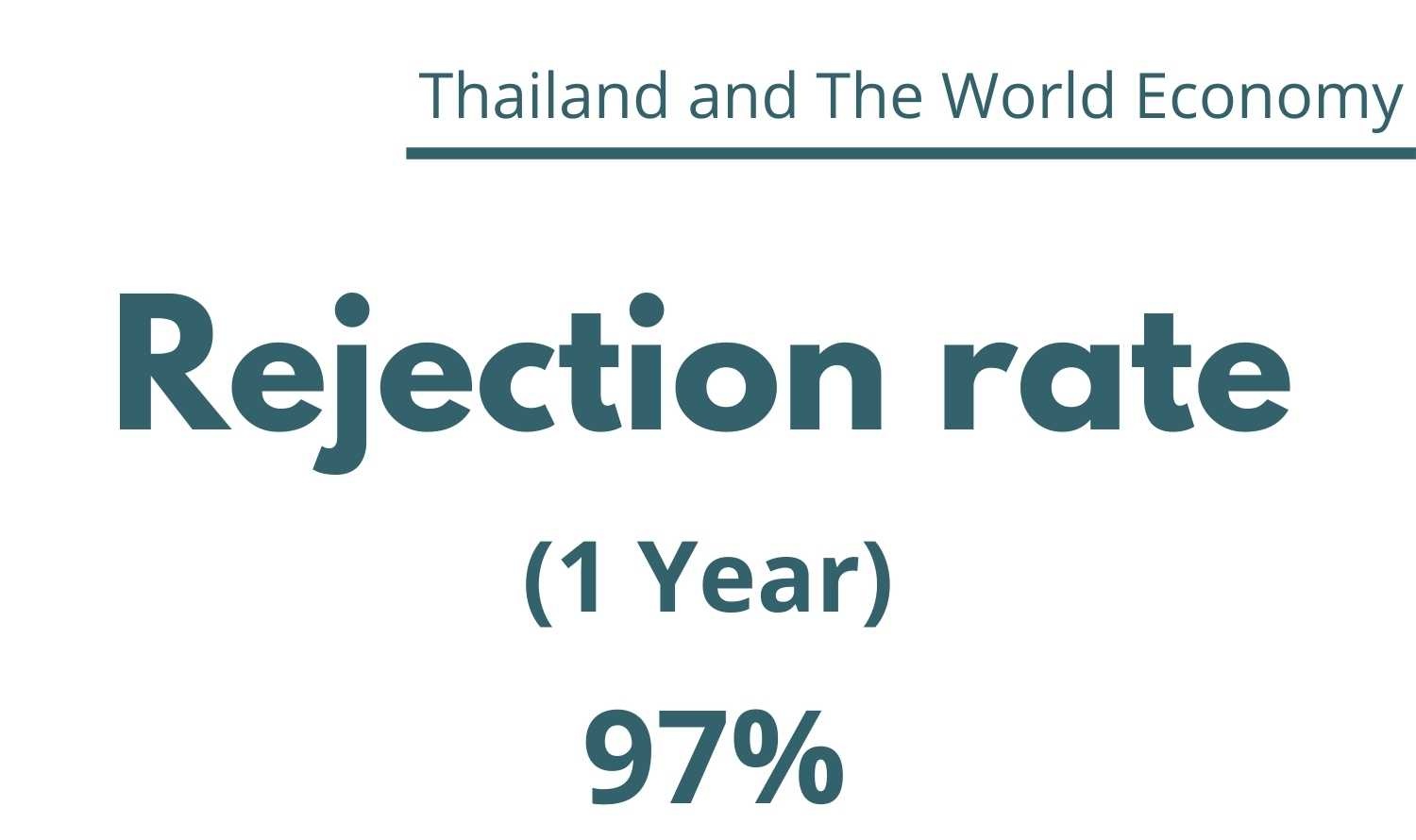Climate Management and Paris Agreement: A Predictive Evaluation
Keywords:
ARDL, Climate Change, Carbon dioxide, Global Warming, Paris Agreement, PledgesAbstract
The present endeavour attempts to assess the impact of increased carbon emissions on the global mean annual temperature by employing an autoregressive distributed lag model (ARDL) on time series data for 1970-2020. The study aims to predict the expected increase in global mean temperature until 2100 by considering the mean annual temperature as the dependent variable, while taking carbon emissions as the independent variable. Additionally, control variables such as electricity from coal sources, energy imports, fossil fuel energy consumption, and water productivity are considered. The findings show that the expected increase in global mean temperature will be 4.1°C, which is higher than the temperature increase expected by the turn of the century. The conclusions reveal that the expected annual mean temperature increase is likely to surpass the 1.5°C and 2°C limits set in the Paris Agreement by 2029 and 2043, respectively. The study recommends a straight cut in global annual carbon emissions by 1.02% from the year 2029 and 0.94% from the year 2043 so as to meet the Paris Agreement targets and to make the planet Earth sustainable. Therefore, the study calls for technological solutions, strict compliance with the respective NDCs, technology transfer to the South, and quickly shifting to non-fossil fuels cumulatively to help the planet towards sustainability.
References
Böhringer, C. (2003). The Kyoto protocol: A review and perspectives. Oxford Review of Economic Policy, 19(3), 451-466.
Brown, P. T., & Caldeira, K. (2017). Greater future global warming inferred from earth’s recent energy budget. Nature, 552(7683), 45-50.
Climate Action Tracker. (2023). 2100 warming projections: Emissions and expected warming based on pledges and current policies [Graph]. Retrieved from https://climateactiontracker.org/global/temperatures/
Climate Interactive. (2023). Climate scoreboard. Retrieved from https://www.climateinteractive.org/ci-topics/climate-energy/scoreboard/
Crippa, M., Guizzardi, D., Muntean, M., Schaaf, E., Solazzo, E., Monforti-Ferrario, F., Olivier, J. G. J., & Vignati, E. (2020). Fossil CO2 emissions of all world Countries-2020 report, EUR 30358 EN. Publications Office of the European Union, Luxembourg: Retrieved from https://publications.jrc.ec.europa.eu/repository/handle/JRC121460
Danish. (2020). Moving toward sustainable development: The relationship between water productivity, natural resource rent, international trade, and carbon dioxide emissions. Sustainable Development, 28(4), 540–549.
Doeffinger, T., & Hall, J. W. (2020). Water stress and productivity: An empirical analysis of trends and drivers. Water Resources Research, 56(3). e2019WR025925.
Dulal, A., Yao, X., Barker-Gibb, M., Tachega, M. A., Ge, S., Li, H., Dulal, A., Yao, X., Barker-Gibb, M., Tachega, M. A., Ge, S., & Li, H. (2021). Impact of renewable energy on carbon dioxide emission reduction in Bangladesh. Journal of Power and Energy Engineering, 9(5), 134–165.
Eurostat. (2022, June 24). CO2 emissions from energy use up by more than 6% in 2021. Luxembourg: European Commission. Retrieved from https://ec.europa.eu/eurostat/web/products-eurostat-news/-/ddn-20220624-1
Falkner, R. (2016). The Paris agreement and the new logic of international climate politics. International Affairs, 92(5), 1116-1125.
Gasparotto, J., & Da Boit Martinello, K. (2021). Coal as an energy source and its impacts on human health. Energy Geoscience, 2(2), 113–120.
Gore, T. (2020). Confronting carbon inequality: Putting climate justice at the heart of the COVID-19 recovery. Retrieved from https://policy-practice.oxfam.org/resources/confronting-carbon-inequality-putting-climate-justice-at-the-heart-of-the-covid-621052/
Grunewald, N., & Martinez-Zarzoso, I. (2016). Did the Kyoto protocol fail? An evaluation of the effect of the Kyoto protocol on CO2 emissions. Environment and Development Economics, 21(1), 1-22.
Hansen, J., Sato, M., Ruedy, R., Lo, K., Lea, D. W., & Medina-Elizade, M. (2006). Global temperature change. Proceedings of the National Academy of Sciences of the United States of America, 103(39), 14288–14293.
Herring, D. (2012, March 6). Climate change: Global temperature projections. Retrieved from https://www.climate.gov/news-features/understanding-climate/climate-change-global-temperature-projections
Hong, B.D. & Slatick, E. R. (1994). Carbon dioxide emission factors for coal. Quarterly Coal Report, January-April (1), 1–18.
Horowitz, C. A. (2016). Paris agreement. International Legal Materials, 55(4), 740-755.
Huang, W. M., Lee, G. W. M., & Wu, C. C. (2008). GHG emissions, GDP growth and the Kyoto protocol: A revisit of environmental Kuznets Curve hypothesis. Energy Policy, 36(1), 239-247.
Intergovernmental Panel on Climate Change (IPCC). (2014). Climate Change 2014: Mitigation of Climate Change. Contribution of Working Group III to the Fifth Assessment Report of the Intergovernmental Panel on Climate Change. Cambridge: Cambridge University Press.
Intergovernmental Panel on Climate Change (IPCC). (2023). Climate Change 2022 - Mitigation of Climate Change: Working Group III Contribution to the Sixth Assessment Report of the Intergovernmental Panel on Climate Change. In Climate Change 2022 - Mitigation of Climate Change. Cambridge: Cambridge University Press.
Intergovernmental Panel on Climate Change (IPCC). (2023). Summary for Policymakers. Synthesis report of the IPCC Sixth Assessment Report. Retrieved from https://www.ipcc.ch/report/ar6/syr/
Jakob, M., Steckel, J. C., Jotzo, F., Sovacool, B. K., Cornelsen, L., Chandra, R., Edenhofer, O., Holden, C., Löschel, A., Nace, T., Robins, N., Suedekum, J., & Urpelainen, J. (2020). The future of coal in a carbon-constrained climate. Nature Climate Change, 10(8), 704–707.
Janetschek, H., Brandi, C., Dzebo, A., & Hackmann, B. (2020). The 2030 agenda and the Paris agreement: Voluntary contributions towards thematic policy coherence. Climate Policy, 20(4), 430-442.
Jernnäs, M., & Linnér, B. O. (2019). A discursive cartography of nationally determined contributions to the Paris climate agreement. Global Environmental Change, 55, 73-83.
Karki, U., & Rao, P. (2023). Techno-economic analysis of the water, energy, and greenhouse gas emissions impacts from the adoption of water efficiency practices in the U.S. manufacturing sector. Resources, Conservation and Recycling, 196.
Kopala, M. R., Ashta, A., Mor, S., & Parekh, N. (2023). The co-evolution of India’s policy on science, technology, and innovation with university education: The need for innovation in higher educational institutions. Space and Culture, India, 11(2), 6-17.
Li, J., Irfan, M., Samad, S., Ali, B., Zhang, Y., Badulescu, D., & Badulescu, A. (2023). The relationship between energy consumption, CO2 emissions, economic growth, and health indicators. International Journal of Environmental Research and Public Health, 20(3), 1-20.
Lindsey, R. & Dahlman, L. (28 June, 2022). Climate change: Global temperature. National Oceanic and Atmospheric Administration. Retrieved from https://www.climate.gov/news-features/understanding-climate/climate-change-global-temperature
Mann, M. E. (2023, September 24). Global warming. Retrieved from Encyclopaedia Britannica https://www.britannica.com/science/global-warming
Marston, T., Lamsal, L., Ancona, G.H., Caldwell, Z., Richter, P.D., Ruddell, B.L., Rushforth, B.R., & Frankel Davis, K. (2020). Reducing water scarcity by improving water productivity in the United States. Environmental Research Letters, 15(9).
Martins, T., Barreto, A. C., Souza, F. M., & Souza, A. M. (2021). Fossil fuels consumption and carbon dioxide emissions in G7 countries: Empirical evidence from ARDL bounds testing approach. Environmental Pollution, 291.
Mella, P. (2022). Global warming: Is it (im)possible to stop it? The systems thinking approach. Energies, 15(3), 1-33.
Mor, S. & Das, M. (2023). G-20 and sustainable development: A way forward. Space and Culture, India, 11(2), 1-5.
Mor, S. & Ghimire, M. (2022). Transparency and nationally determined contributions: A review of the Paris agreement. Interdisciplinary Journal of Economics and Business Law, 11(2), 106–119.
Mor, S. (2014). Estimation of environmental Kuznets curve for India. EPRA International Journal of Environmental Economics, Commerce and Educational Management, 1, 10–16.
Mor, S. (2017a). Climate change and land revenue: Evidences from Indian agriculture. Disaster Advances, 10(12), 21–27.
Mor, S. (2017b). Impacts of climate variability on the wheat production in India. Disaster Advances, 10(7), 12–18.
Mor, S., Madan, S., & Prasad, K. D. (2021). Artificial intelligence and carbon footprints: Roadmap for Indian agriculture. Strategic Change, 30(3), 269–280.
Mor, S., Ranjan, A., Madan, S., & Ghimire, M. (2023). Kyoto protocol and Paris agreement: Transition from bindings to pledges – A Review. Millennial Asia, 15(4); 691-711.
Mor, S. & Singh, G. (2019). Does Growth affect environment? Evidence from the World. Journal of International Economics, 10(1): 42-49.
Mor, S. and Jindal S. (2012). Estimation of Environmental Kuznets Curve and Kyoto Parties: A Panel Data Analysis. International Journal of Computational Engineering and Management, 15, 5-9.
National Aeronautics and Space Administration (NASA). (2023). Is it too late to prevent climate change? – Climate change: Vital signs of the planet. Retrieved from https://climate.nasa.gov/faq/16/is-it-too-late-to-prevent-climate-change/
National Aeronautics and Space Administration (NASA). (2020). Climate Change: Vital Signs of the Planet, 2020. Retrieved from https://climate.nasa.gov/vital-signs/global-temperature/
National Centers for Environmental Information (NCEI). (2021). Global Climate Report. Retrieved from https://www.ncei.noaa.gov/access/monitoring/monthly-report/global/202113
National Oceanic and Atmospheric Administration (NOAA). (2021). NOAA index tracks how greenhouse gas pollution amplified global warming in 2020 - Welcome to NOAA Research. Retrieved from https://research.noaa.gov/article/ArtMID/587/ArticleID/2759/NOAA-index-tracks-how-greenhouse-gas-pollution-amplified-global-warming-in-2020
Olivier, J. G. J., & Peters, J. A. H. W. (2020). Trends in global CO2 and total greenhouse gas emissions: 2020 Report. Retrieved form https://www.pbl.nl/en/publications/trends-in-global-co2-and-total-greenhouse-gas-emissions-2020-report
Oxfam International. (2020). Confronting carbon inequality in the European Union. Oxfam Media Briefings. Retrieved from https://www.oxfam.org/en/research/confronting-carbon-inequality-european-union
Pan, A., Xu, S., & Zaidi, S. A. H. (2024). Environmental impact of energy imports: Natural resources income and natural gas production profitability in the Asia-Pacific economic cooperation countries. Geoscience Frontiers, 15(2).
Panghal, A., & Mor, S. (2020). Climate sensitivity of rice crop in India. Plant Cell Biotechnology and Molecular Biology, 21(55–56), 76–88.
Panghal, A., & Mor, S. (2020). Climate variability and wheat crop yield: Forecasting Indian scenario till 2100 AD. Disaster Advances, 13(11), 31–41.
Pesaran, M. H., & Smith, R. P. (1998). Structural analysis of cointegrating VARs. Journal of Economic Surveys, 12(5), 471-505.
Pesaran, M. H., Shin, Y., & Smith, R. J. (2001). Bounds testing approaches to the analysis of level relationships. Journal of Applied Econometrics, 16(3), 289–326.
Rosen, A. M. (2015). The wrong solution at the right time: The failure of the Kyoto protocol on climate change. Politics and Policy, 43(1), 30-58.
Shishlov, I., Morel, R., & Bellassen, V. (2016). Compliance of the parties to the Kyoto protocol in the first commitment period. Climate Policy, 16(6), 768-782.
United Nations Framework Convention on Climate Change (UNFCCC). (1990). Highlights from KEY GHG DATA- Greenhouse Gas (GHG) Emissions Data for 1990-2003. Retrieved from https://unfccc.int/resource/docs/publications/key_ghg.pdf
United Nations Framework Convention on Climate Change (UNFCCC). (2015). Synthesis report on the aggregate effect of the intended nationally determined contributions. Retrieved from http://unfccc.int/focus/indc_portal/items/9240.php
United Nations Framework Convention on Climate Change (UNFCCC). (2015). The Paris Agreement. Retrieved from https://unfccc.int/process-and-meetings/the-paris-agreement/the-paris-agreement
United Nations Framework Convention on Climate Change (UNFCCC). (2021). NDC Synthesis Report. Retrieved from https://unfccc.int/process-and-meetings/the-paris-agreement/nationally-determined-contributions-ndcs/nationally-determined-contributions-ndcs/ndc-synthesis-report#eq-4
Voumik, L. C., Islam, M. A., Ray, S., Mohamed Yusop, N. Y., & Ridzuan, A. R. (2023). CO2 emissions from renewable and non-renewable electricity generation sources in the G7 countries: Static and dynamic panel assessment. Energies 2023, 16(3), 1044.
Wirth, D. A. (2017). The Paris agreement as a new component of the UN climate regime. International Organisations Research Journal, 12(4), 185-214.
World Meteorological Organization. (2019). WMO Statement on the State of the Global Climate in 2018. World Meteorological Organization (WMO‐No. 1233) Geneva, Switzerland. https://library.wmo.int/idurl/4/56141
World Meteorological Organization (WMO). 2022. State of the global climate 2021. Retrieved from https://public.wmo.int/en/our-mandate/climate/wmo-statement-state-of-global-climate
Young, O. R. (2016). The Paris agreement: Destined to succeed or doomed to fail? Politics and Governance, 4(3), 124-132.
Downloads
Published
How to Cite
Issue
Section
Categories
License
Copyright (c) 2024 Thailand and The World Economy

This work is licensed under a Creative Commons Attribution-NonCommercial-NoDerivatives 4.0 International License.










